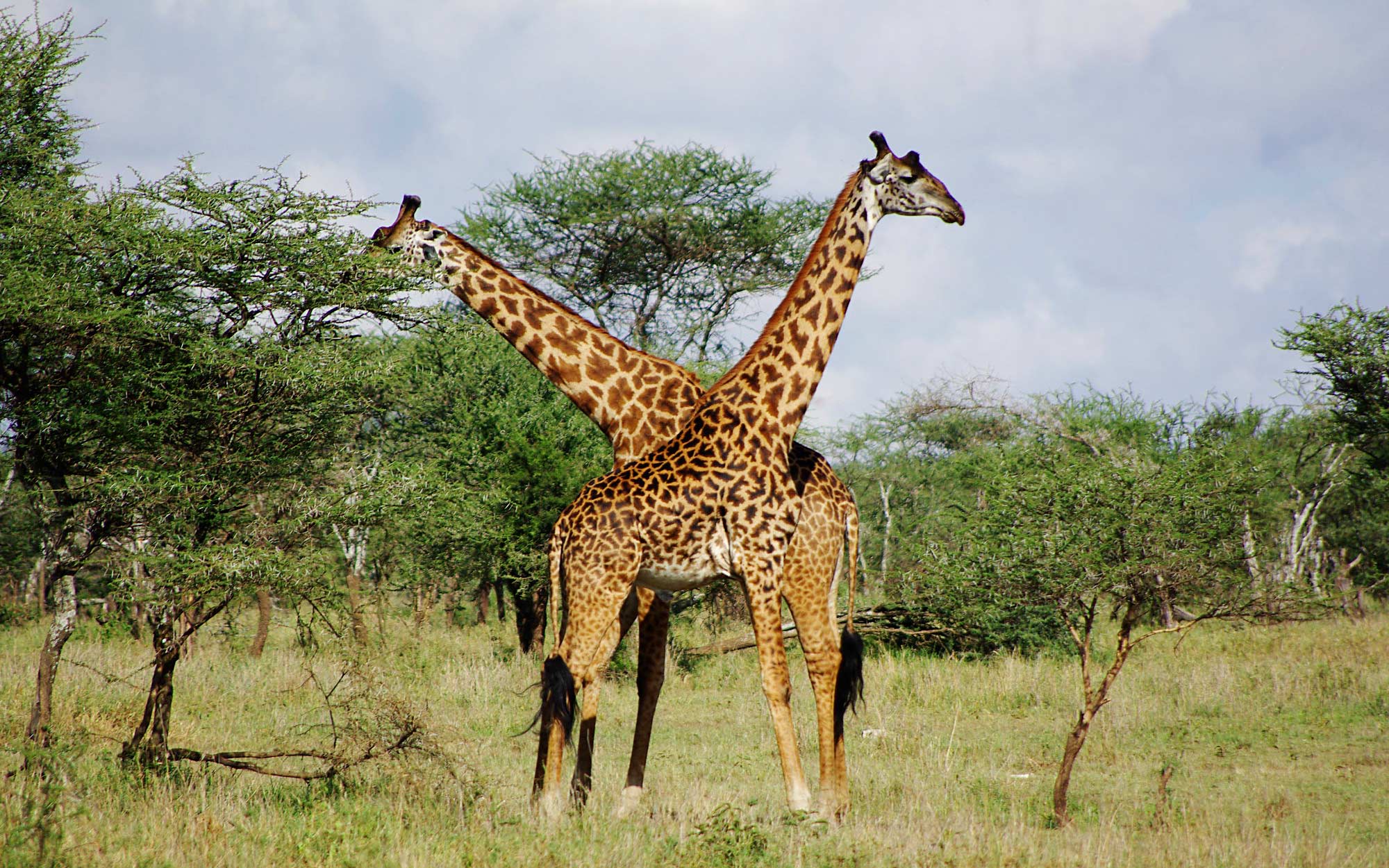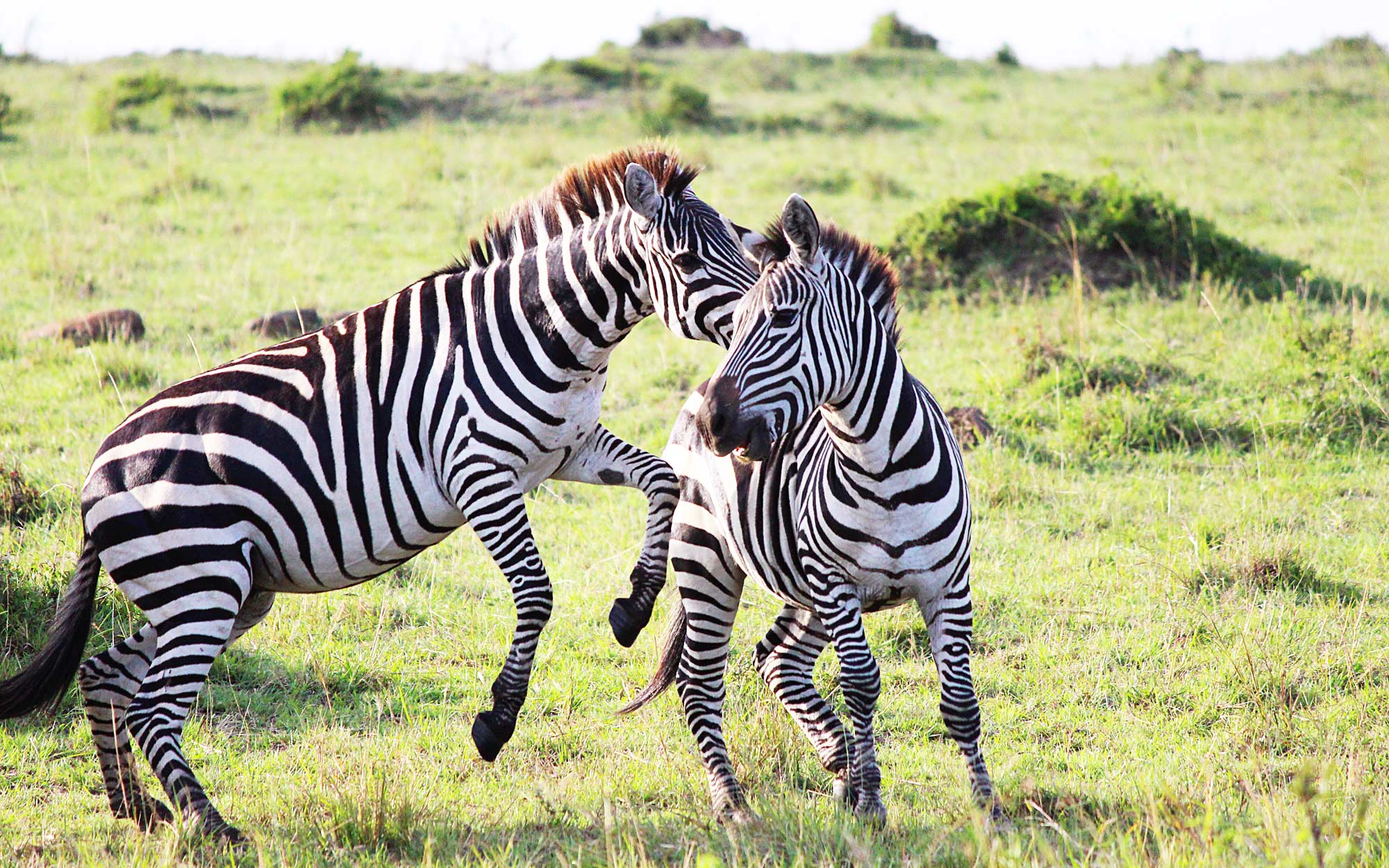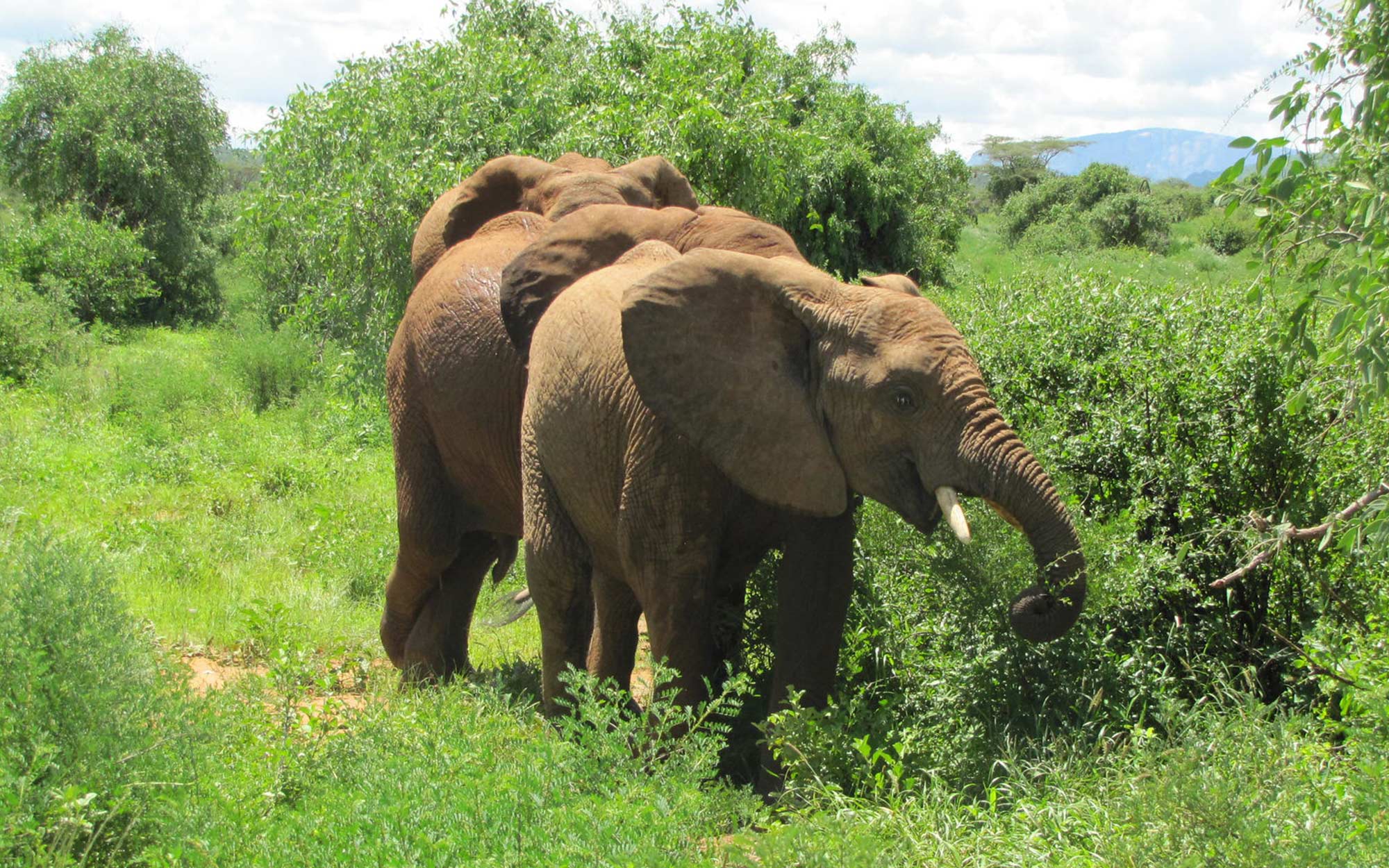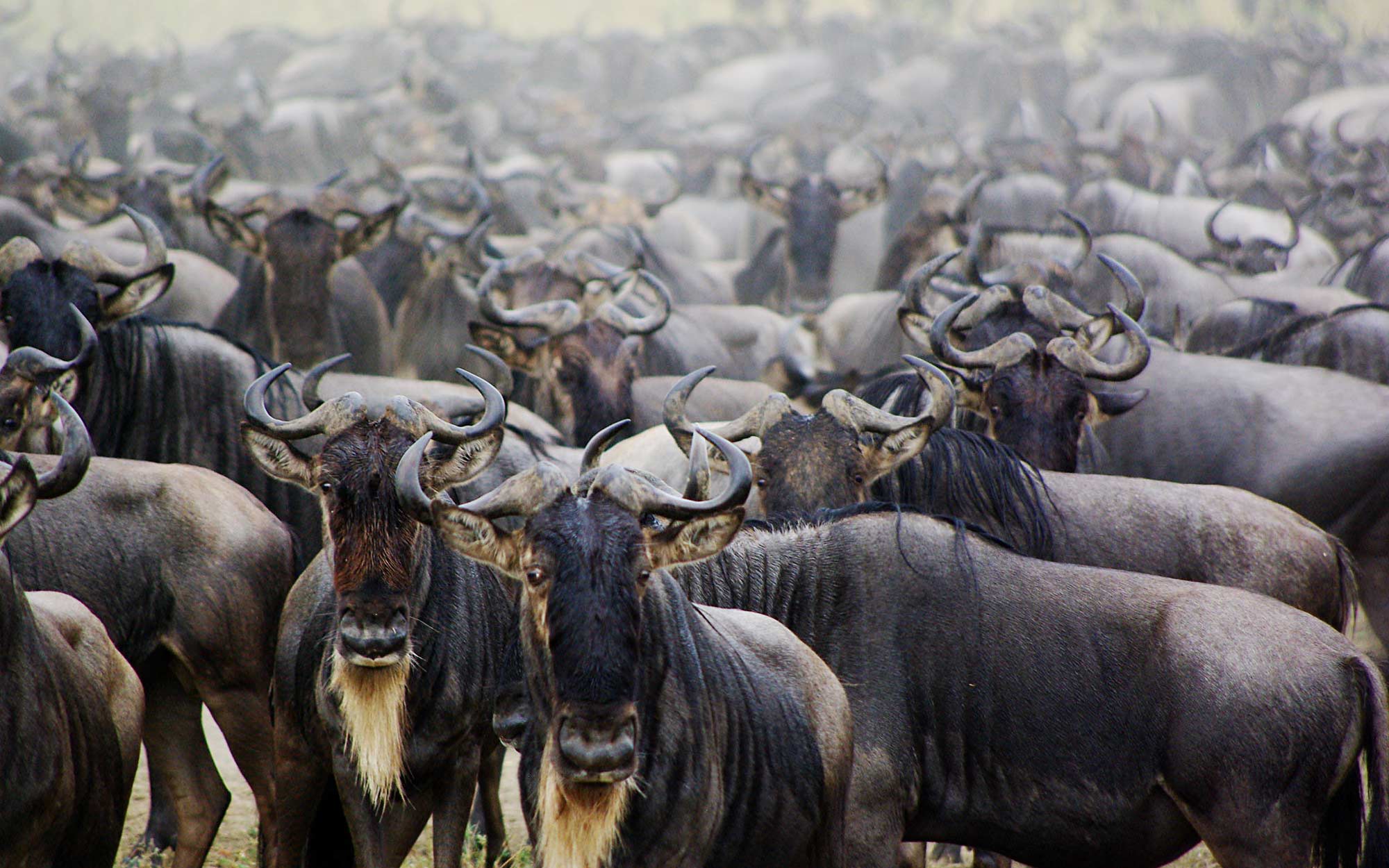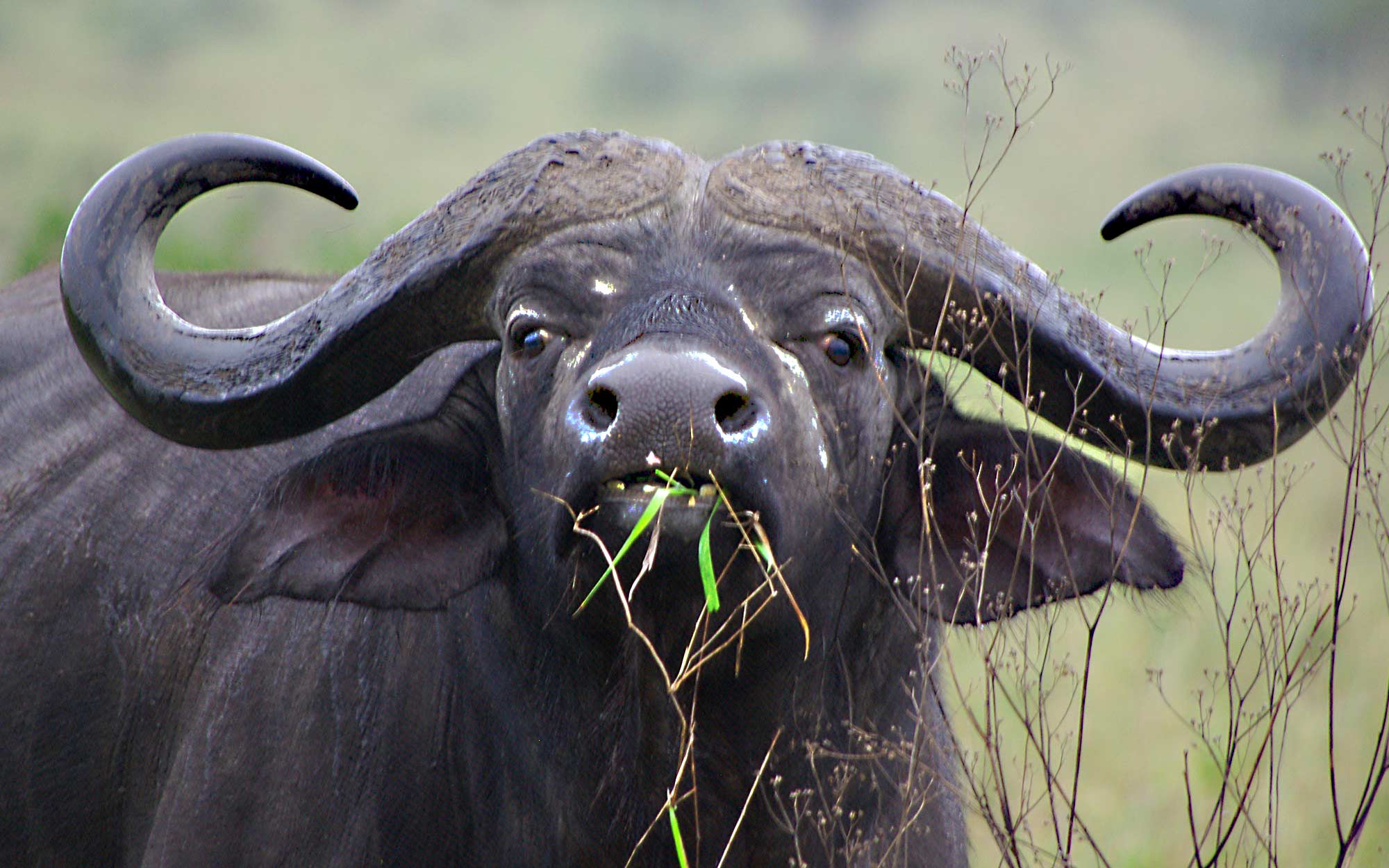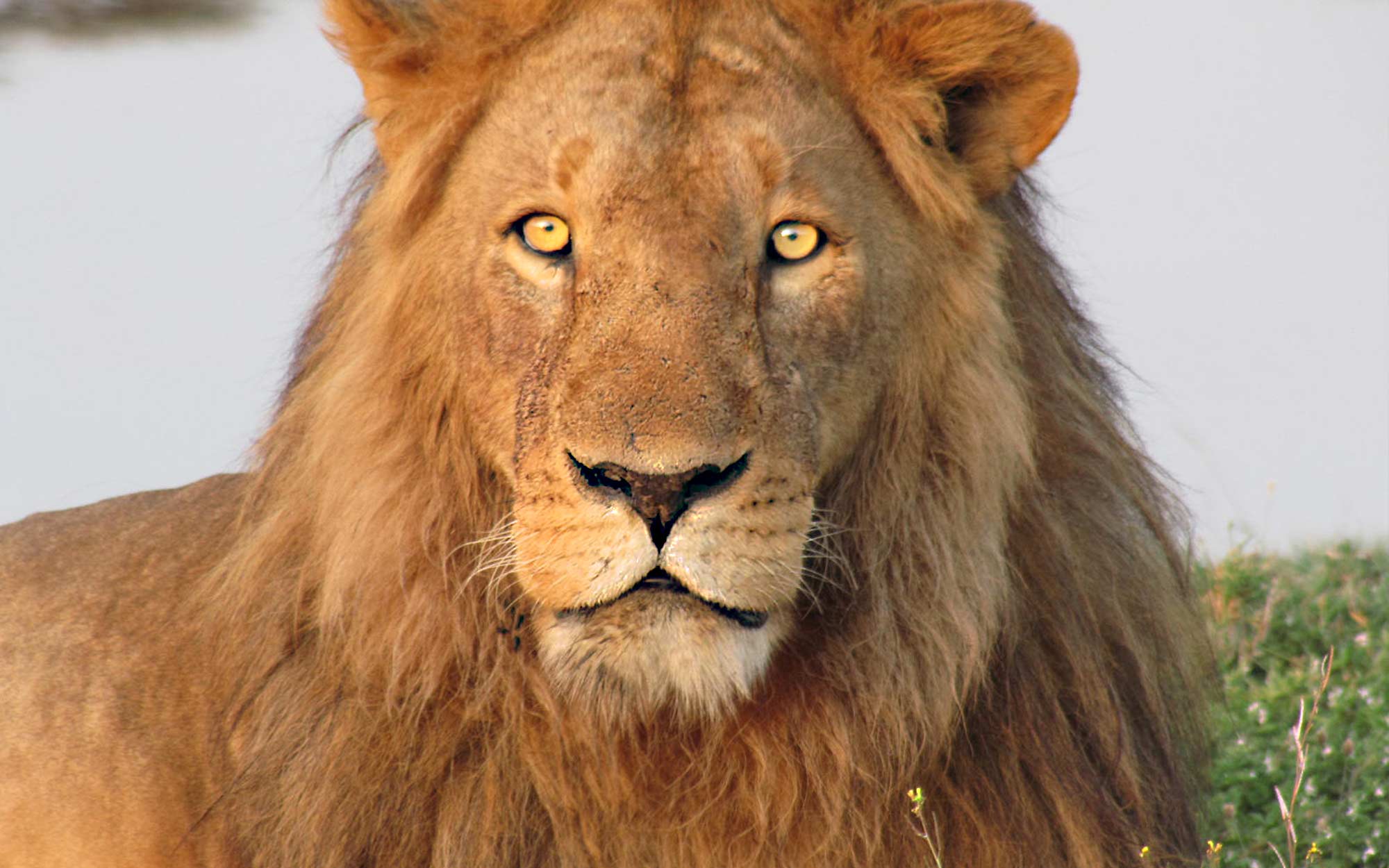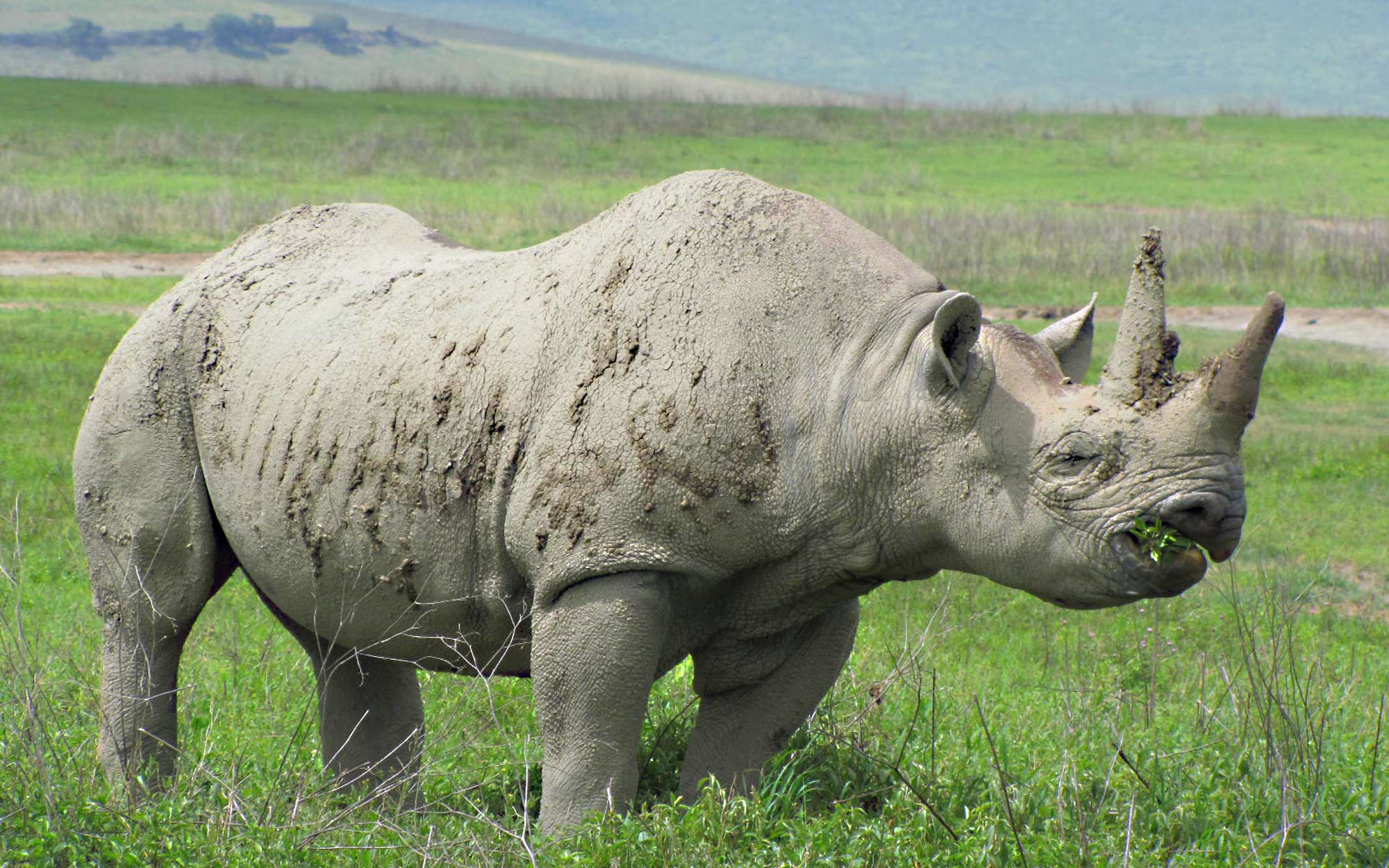What to Know about Game Drives Before You Go on Safari
Game drives are the highlight of most African safaris. Imagine the cool, crisp air of a savanna morning blowing through your hair as your guide steers the 4×4 over a hill. A group of weaverbirds in a nearby acacia tree catches your eye. All of a sudden, you hear a sharp intake of breath and a single, whispered word: “Leopard!”
You turn around and there it is, several yards in front of the vehicle, relaxing on a streambank: one of Africa’s most majestic wild cats in all its spotted glory. The leopard is more beautiful than you ever imagined. You almost forget to breathe.
Game drives bring you right into the heart of the African wilderness, allowing you to get unparalleled views of amazing animals. This article explains everything you need to know about game drives to prepare for your safari.
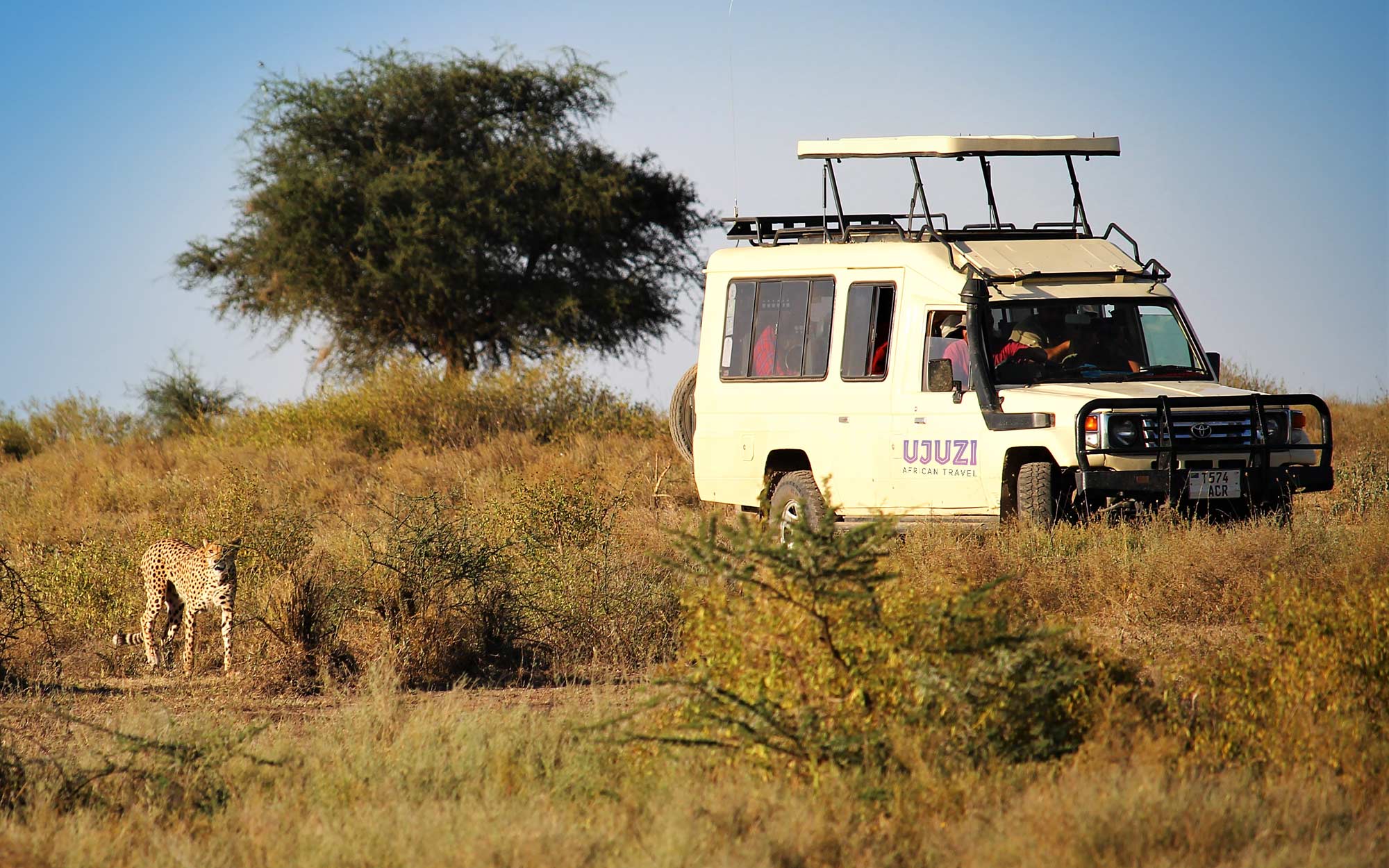
Safari goers watch a cheetah at Maasai Mara National Reserve, Kenya.
What is a game drive?
A game drive is an excursion through wild areas to find some of Africa’s most iconic and elusive wildlife. It is led by a certified naturalist guide who is familiar with the wildlife area and can lead you to amazing sightings. You may also be joined by a tracker who specializes in “reading” natural signs—like broken branches or marks in the dirt—to find animals.
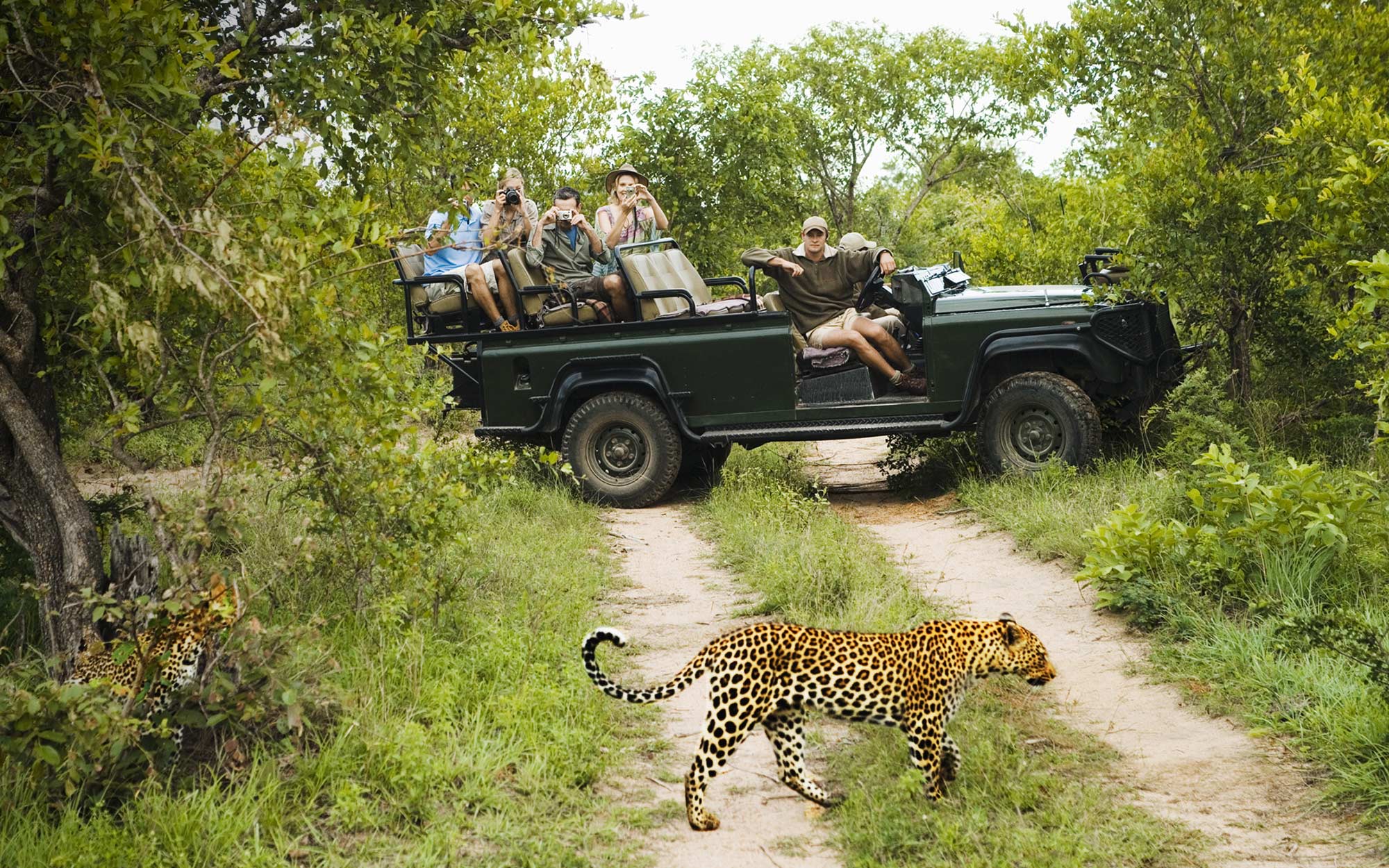
Enjoy a spectacular view on a game drive in an open-air vehicle with stadium seating.
What time of day do game drives occur?
The most popular times for game drives are early morning and late afternoon—two times of day that animals are most active. Particularly in hotter seasons, wildlife tends to rest in the middle of the day.
Early morning game drives start just as the sun is coming up and go for 2–4 hours. You might see lions returning from the hunt, a leopard climbing a tree to sleep away the day in its branches, or a pack of African wild dogs waking up.
The afternoon is a great time to see elephants and other large herbivores cool down along rivers or at watering holes. As the sun lowers and the air gets cooler, large predators start to stir. The leopard you saw in the morning may now descend and go on the prowl for antelope.
In private reserves, nighttime game drives may also be an option. (Most national parks are closed to visitors at night.) These generally start at dusk and last 1–2 hours. Watch a lion pack wake from its daytime slumber and prepare for a nighttime hunt. See hippos emerge from the water for a supper of tall, green grass. As the night sky turns black, elusive safari creatures like caracals and honey badgers emerge. If the moonlight isn’t bright enough for a clear view, your guide may highlight wildlife using special infrared lamps that do not interfere with animals’ night vision.
What types of vehicles are used in game drives?
Depending on the country and terrain, game drives are conducted in 4×4 vehicles or minibuses with seating for 5 to 12 individuals, including the driver. In South Africa and Botswana, the vehicles are typically open at the top. Passenger seats are often “stadium style”—each row is a little higher than the one in front of it, so your view won’t be blocked by the head of the person in front of you.
In East Africa, open or canvas topped vehicles may be used on private reserves. National parks usually require that safari vehicles are enclosed. They can include minibuses, particularly in Kenya, or enclosed 4x4s. Both generally come with a sunroof or pop-up top to increase the range of view. At Ujuzi, you will always get a window seat, so you don’t have to worry about a blocked view.
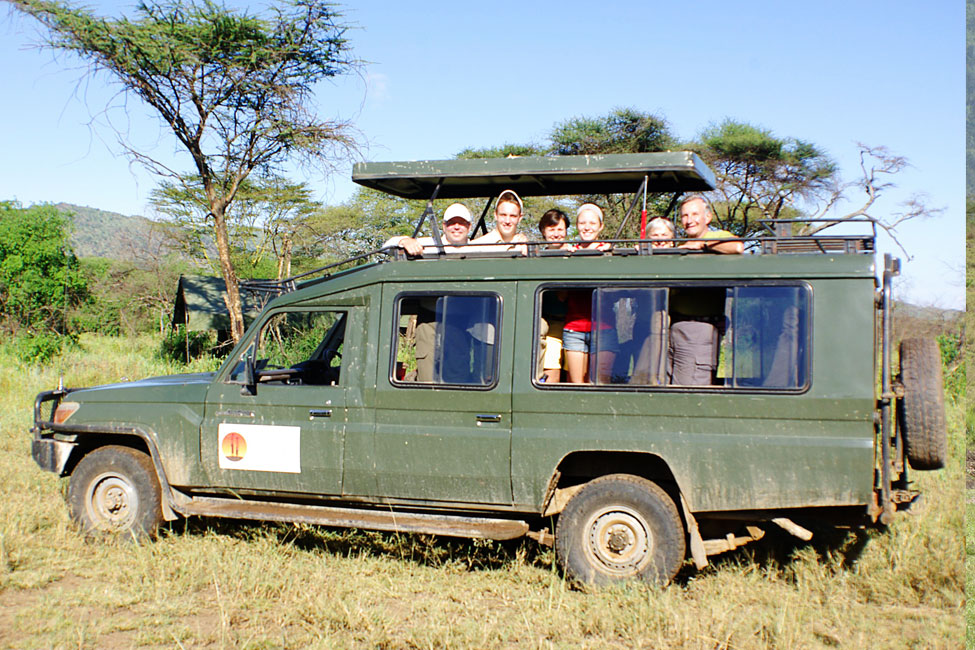
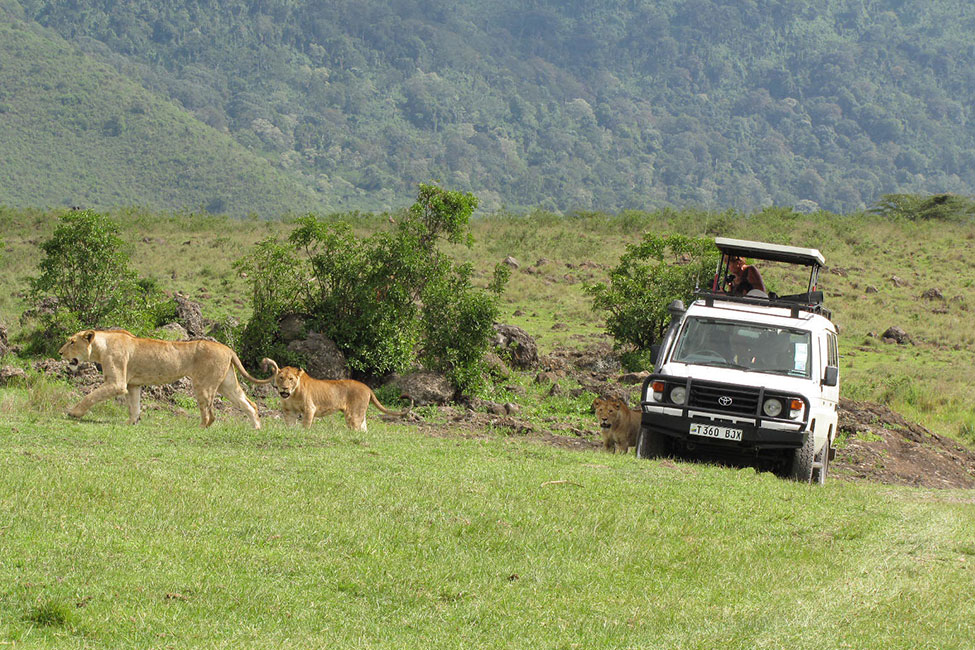
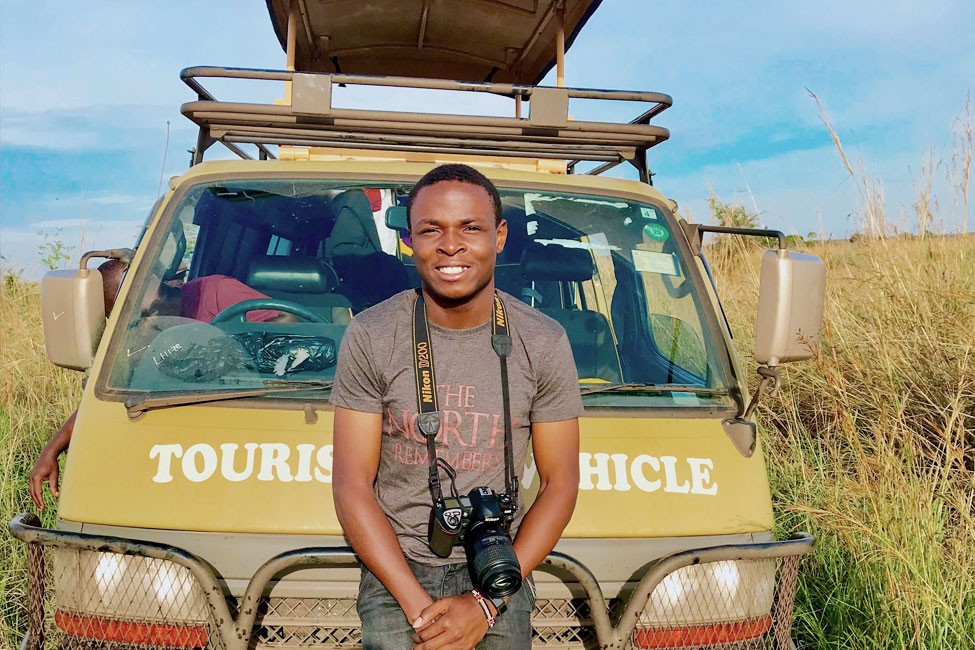
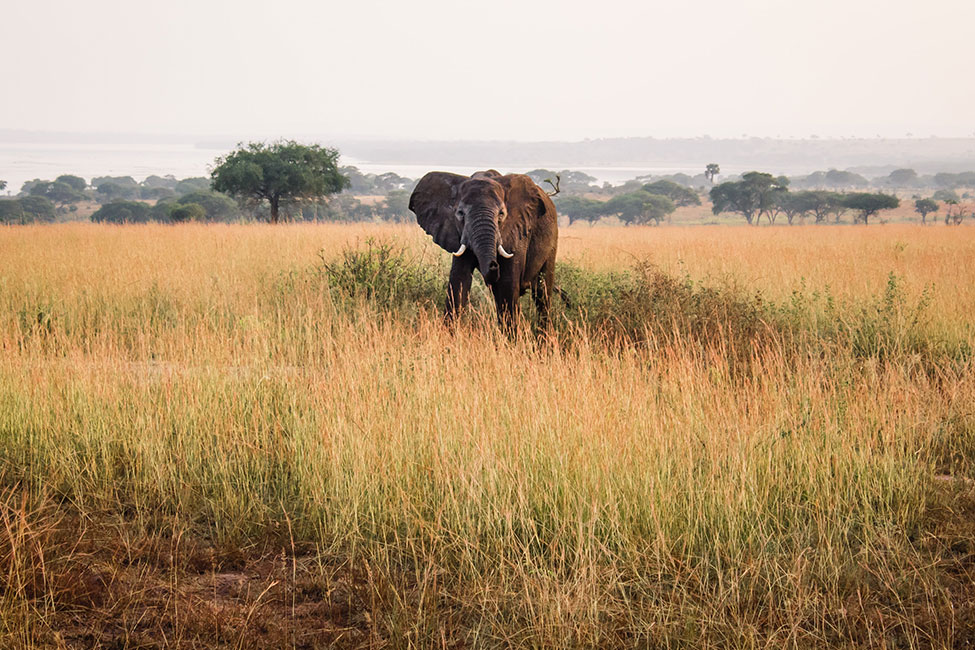
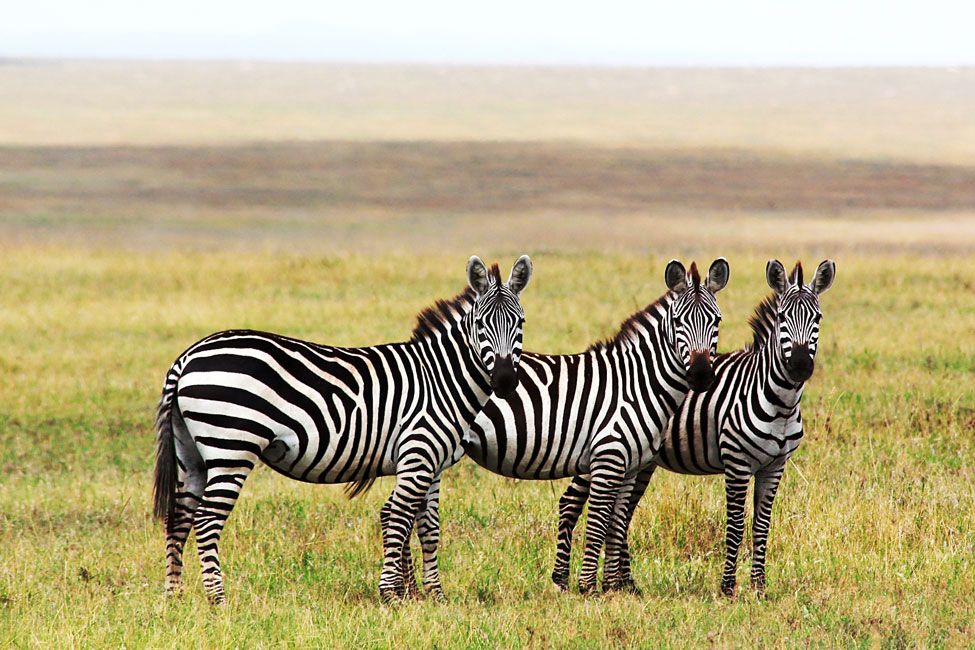
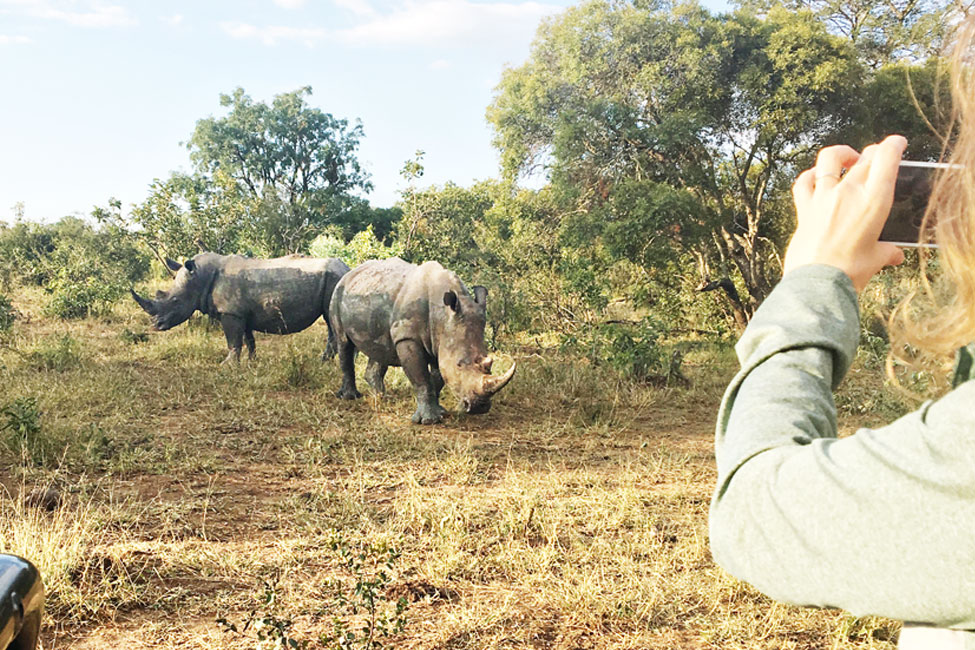
Rhinos, elephants, and giraffes dot the African savanna.
What can I see on a game drive?
Almost everything wild Africa has to offer can be seen on a game drive, from the tiny birds to majestic elephants. All of the photos in the gallery below were taken on Ujuzi game drives.
The photos in this slideshow are from Ujuzi African Travel game drives.
Who can go on a game drive?
Game drives are one of the most accessible safari activities, appropriate for a variety of ages and fitness levels. While parks and reserves may bar entry to very young children for safety reasons, anyone old enough to enter the wildlife area can go on a game drive.
What should I bring on a game drive?
You don’t need to bring anything but yourself on a game drive. On Ujuzi safaris, water is provided in the vehicle, and the guide usually has a guidebook or two to pass around—not that you will need it, thanks to their expertise.
However, most travelers like to have a pair of binoculars for viewing smaller or more distant wildlife. Consider bringing a camera or cell phone for recording some of the wildlife you see. Dress appropriately for the weather and bring extra sunblock if you will be spending more than two hours in an open vehicle.
What steps are taken to protect the land and wildlife from game drive vehicles?
Game drives take place predominantly on designated tracks to avoid damage to plant life, and most national parks prohibit off-road driving. On some private reserves, drivers may go off these tracks in search of wildlife. If a game drive needs to go off-road, the guide will search for areas with more resilient soil and avoid going over the same area twice to minimize impacts.
Additionally, Ujuzi only works with certified driver-guides who drive carefully around wildlife, limiting their speed and avoiding anything that could stress the animals.
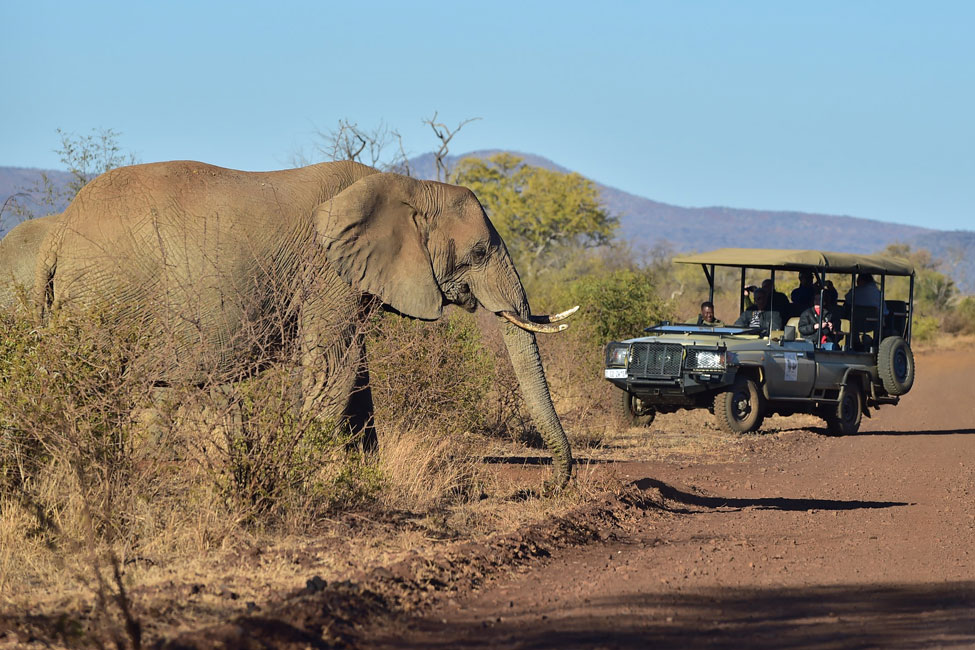
Madikwe Game Reserve, South Africa. Photo credit: South African Tourism
Game drives also play a huge role in protecting wildlife. Park admission fees provide much-needed money to conservation efforts, and the presence of guides and safari-goers in a wild area discourages poaching. Going on a safari is a great way to support preservation of some of the world’s most beautiful wild areas.
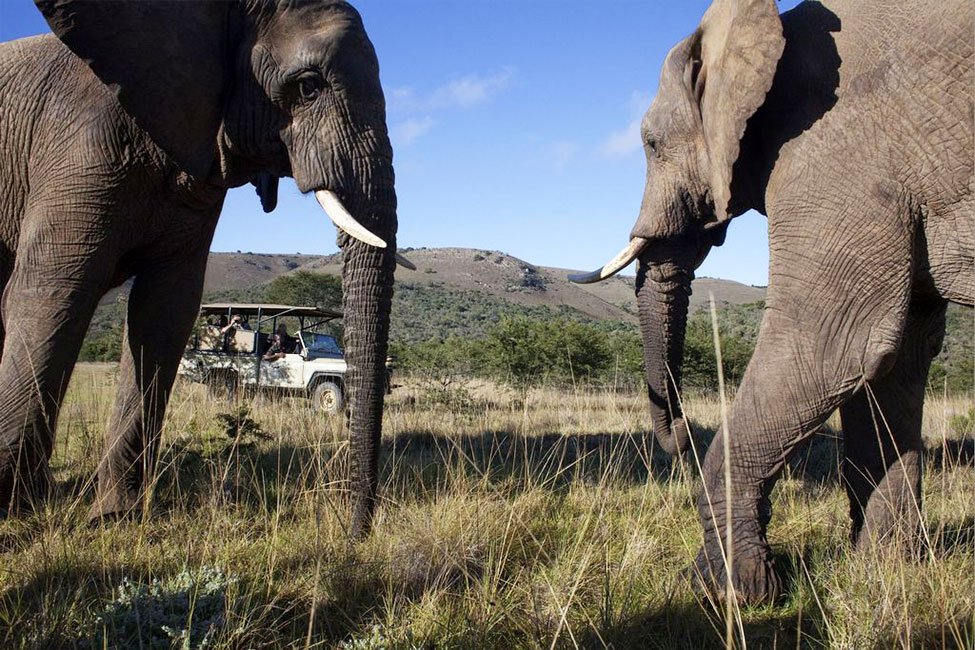
Game drive and dueling elephants. Photo credit: South African Tourism
Pin This Post & Save for Later!
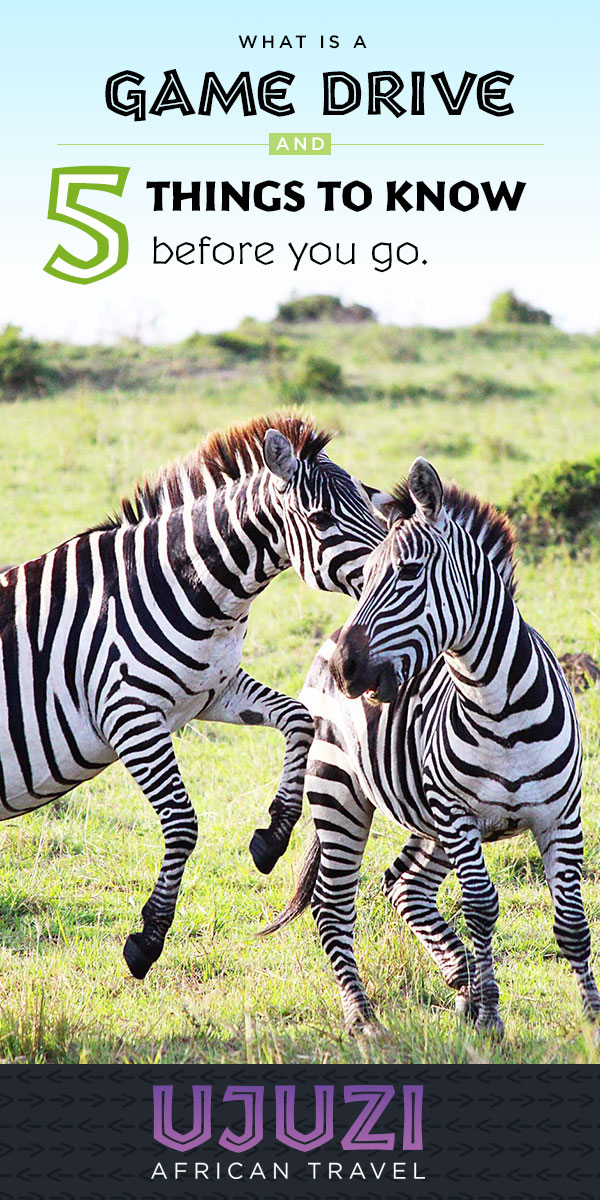
Sign up for the Ujuzi Newsletter!
From top travel tips to innovative safaris and conservation movement, get inspired to plan your next African safari!


